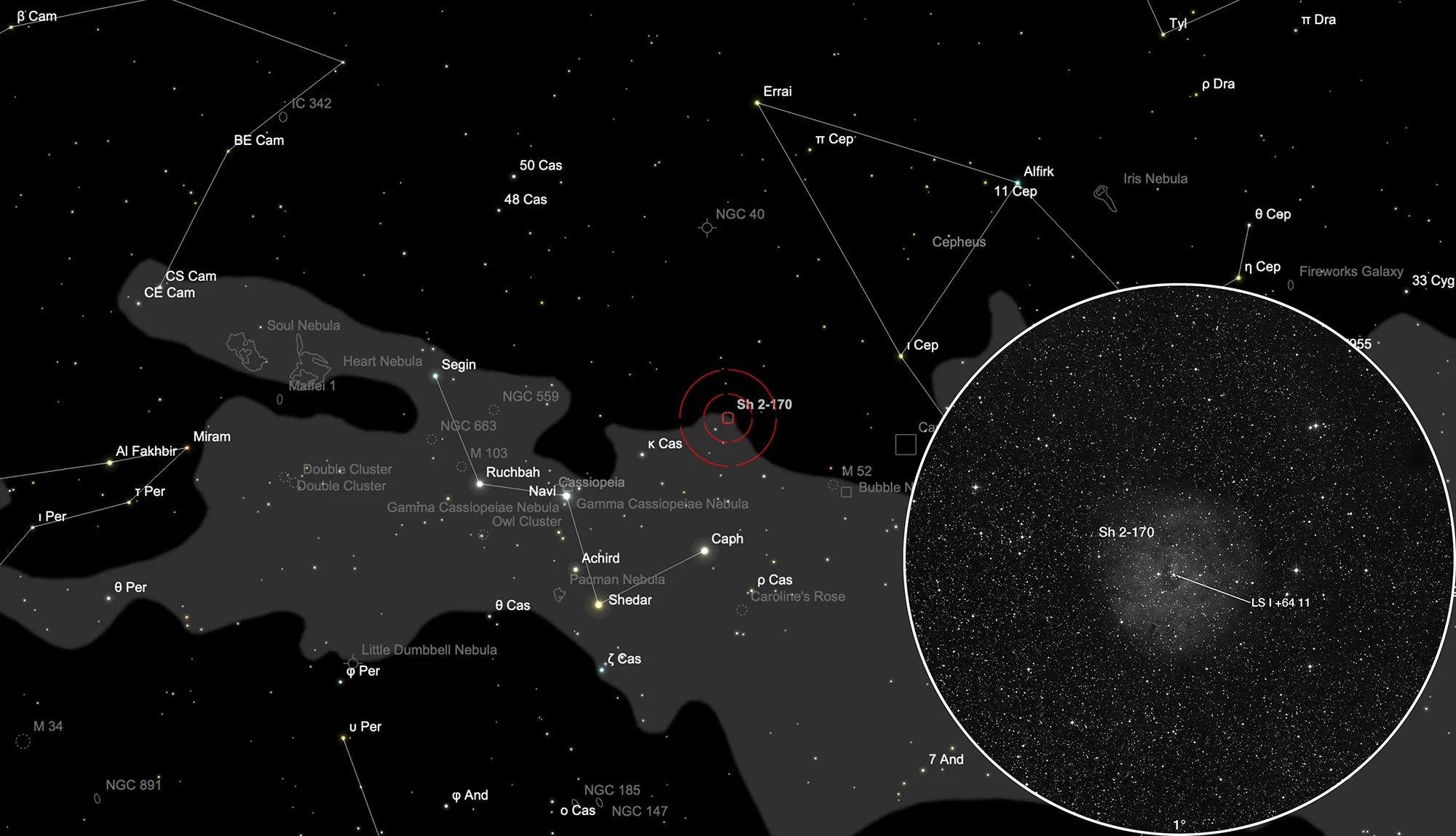Little Rosette Nebula (Sh 2-170)

History
In the late 1950-ies the American astronomer Stewart Sharpless discovered the large nebula Sh 2-170 on the 48 inch Schmidt telescope photo plates of the «Palomar Observatory Sky Survey». In 1959 he published his discovery together with 313 H-II regions in a catalogue. He classified it as circular, structure between amorphous and filamentary with medium brightness, 20 arc minutes in diameter. [310]
In Beverly Lynds «Catalogue of Bright Nebulae», which was published in 1965, this nebula is listed as LBN 117.62+02.29 or LBN 577. [270]
The nebula resembles the larger and brighter Rosette Nebula (NGC 2237), hence the nickname «Little Rosette Nebula»
Physical Properties
Sh 2-170 is a young, almost circular, diffuse H-II region, ionized by a single main sequence O star, located near the periphery of a small dense molecular cloud. From the thermal continuum emission the mass of ionized gas within a radius of ∼7 pc is estimated to 350 solar masses. The H-I (λ21 cm) and far-infrared observations show an extended low-density atomic component, of ∼1000 solar masses, within an irregular boundary surrounding the ionized gas of mean radius ∼10 pc. CO emission shows a molecular cloud of ∼1150 solar masses within an area 6 pc × 4 pc. A compact infrared component coincides with the cloud. The exciting 10 mag star (LS I +64 11) is located on the near side of the cloud, just inside the southern periphery. It is is a member of the small open cluster Stock 18 [628]. Estimated distances range from 2.8 kpc to 5.8 kpc. [145]
Finder Chart
The H-II region Sh 2-170 is located in the constellation Cassiopeia and is circumpolar for Central Europe. Circa 2.5° to the south lies the supernova remnant CTB 1 and 2.5° to the north is Cederblad 214 (NGC 7822, Sh 2-171). On 24 September it is in opposition to the Sun and culminates at local midnight. The best time to observe is June to February, when the constellation is highest at night.
Visual Observation
400 mm Aperture: Determining the position based on surrounding stars is not quite straightforward. Unfortunately, neither without nor with an O-III filter is any nebula discernible. — 400 mm f/4.5 Taurus Dobsonian, Hasliberg, 16. 12. 2023, SQM 21.2, Bernd Nies
